Have you ever wondered just how long ten meters really is? In this comprehensive guide, we’ll explore various objects and distances that measure up to ten meters, helping you visualize this length in everyday scenarios.
From natural wonders to man made structures, sports fields to household items, we’ll cover it all to give you a well-rounded understanding of this versatile measurement.
How Long is 10 Meters Length?
Let’s start with the basics. Ten meters is equivalent to:
- 32.8 feet
- 10.94 yards
- 1,000 centimeters
It’s a versatile measurement that appears in various aspects of our lives, from sports to architecture. But what does it look like in the real world? Let’s dive in and find out!
You Might Also Like How Much is 100 ML? 10 Common Comparisons
10-Meter Tall Building: A Vertical Perspective
Imagine standing at the base of a 10-meter tall building. It’s not a skyscraper by any means, but it’s certainly tall enough to catch your attention. This height is roughly equivalent to a three-story building, giving you a vertical perspective on our 10-meter measurement.
Fun fact: Many residential buildings in urban areas are around this height, making it a common sight in cities worldwide.
A 10-meter tall building would typically have:
- Ground floor: ~3 meters
- Second floor: ~3 meters
- Third floor: ~3 meters
- Roof and structural elements: ~1 meter
This architectural context helps us understand ten meters in terms of the built environment we see every day. It’s tall enough to house multiple floors but not so tall that it dominates a skyline.
How Far is 10 Meters? Horizontal Distance Explored
Now, let’s consider ten meters as a horizontal distance. Picture yourself standing at one end of a 10-meter stretch.
It’s about the length of:
- Half a bowling lane
- The width of a singles tennis court (plus a bit extra)
- Two standard parking spaces lined up end-to-end
This distance is long enough to feel significant when walking, but short enough to be easily visualized in many everyday settings. It’s a distance you might cover in a few seconds of brisk walking, or the length of a small garden.
In sports, ten meters plays a significant role:
- In swimming, it’s the width of a short course pool
- In athletics, it’s the distance between some hurdles in a race
- In diving, it’s the height of the highest platform used in competition
You might be Interested Common Things That Are 5 Centimeters Long
10 Meters Compared to the Human: A Personal Perspective
To truly grasp the length of ten meters, let’s compare it to the average human height. An average adult is about 1.7 meters tall. So, ten meters would be equivalent to:
- About 5.9 average adults standing head to toe
- Roughly 3 tall adults with their arms fully stretched upwards
This comparison helps us relate the measurement to our own bodies, making it more tangible and easy to visualize. It’s a reminder of how small we are in comparison to many structures and distances we encounter daily.
Retractable Tape Measure:
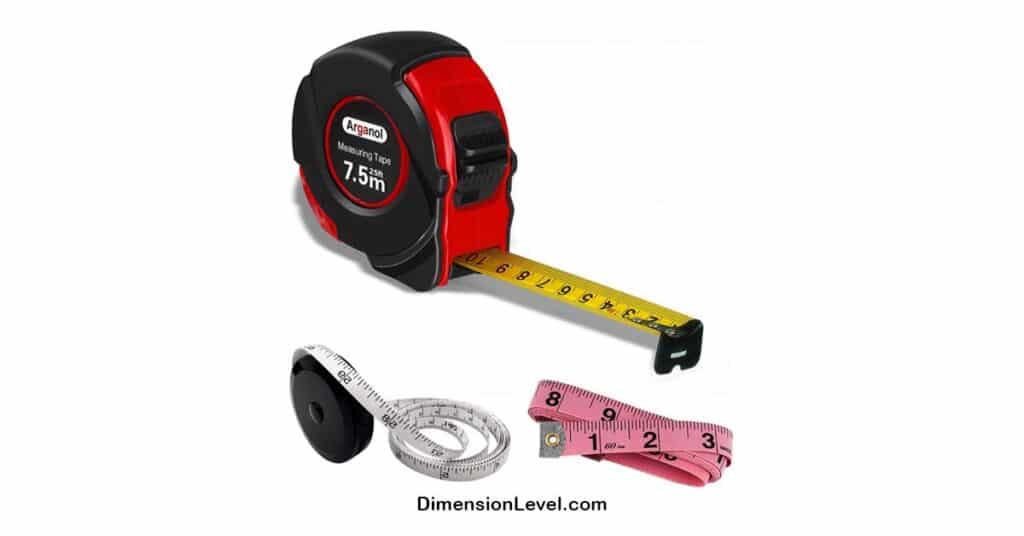
A retractable tape measure is an essential tool for anyone working with measurements. Most standard tape measures extend to about 5 meters, meaning you’d need to use it twice to measure ten meters.
Pro tip: When measuring long distances, it’s often helpful to use markers or have a partner to hold the end of the tape measure.
Tape measures come in various lengths:
- Pocket tape measures: Usually 3-5 meters
- Standard tape measures: Often 5-8 meters
- Long tape measures: Can extend up to 100 meters or more
For a 10-meter measurement, a standard tape measure would suffice, though you might need to make two measurements.
10 Adult Steps: Walking the Distance
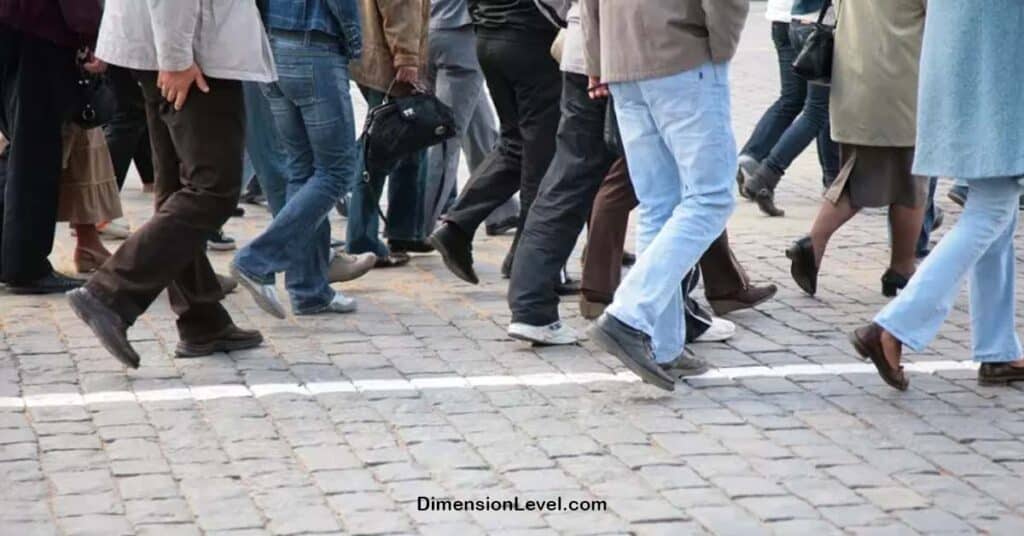
An average adult’s stride length is about 0.8 to 1 meter. This means that ten meters is roughly equivalent to 10-12 adult steps. Next time you’re out for a walk, try counting your steps to get a feel for this distance!
This comparison is particularly useful because it gives us a dynamic, physical way to understand the measurement. It’s not just about visualizing a static distance, but about feeling it through movement.
Factors that can affect stride length include:
- Height
- Age
- Walking speed
- Terrain
So while 10-12 steps is a good estimate, your personal experience might vary slightly.
Explore this Things That Are 80 Feet
Telephone Pole:
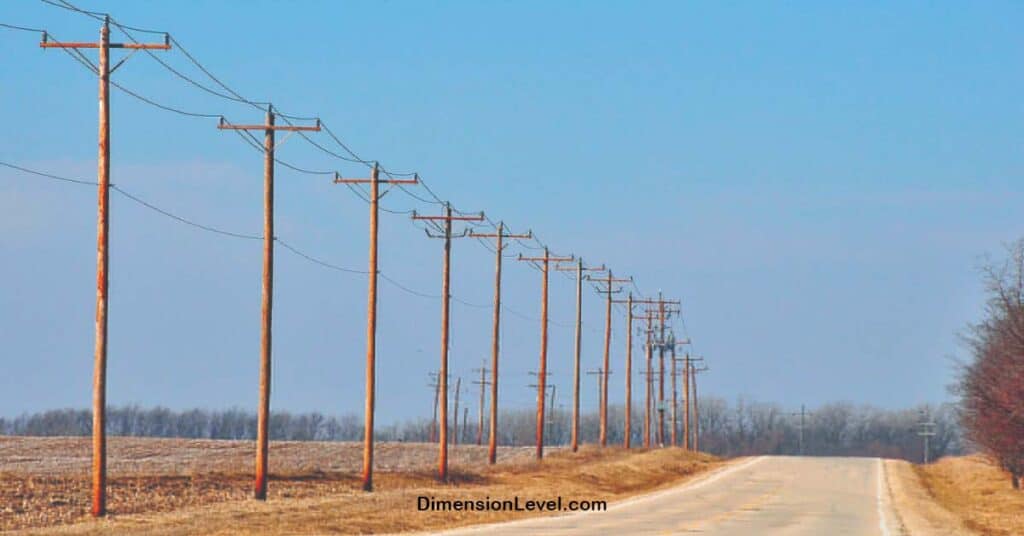
Telephone poles are a ubiquitous sight along roads and in residential areas. While their height can vary, many standard telephone poles are about 10 meters tall. Next time you’re driving, take a glance at these poles to reinforce your understanding of this measurement.
Interesting facts about telephone poles:
- They’re often made of wood, concrete, or steel
- The distance between poles is typically 40-50 meters
- Some modern poles also carry fiber optic cables for high-speed internet
Half a Cricket Pitch:
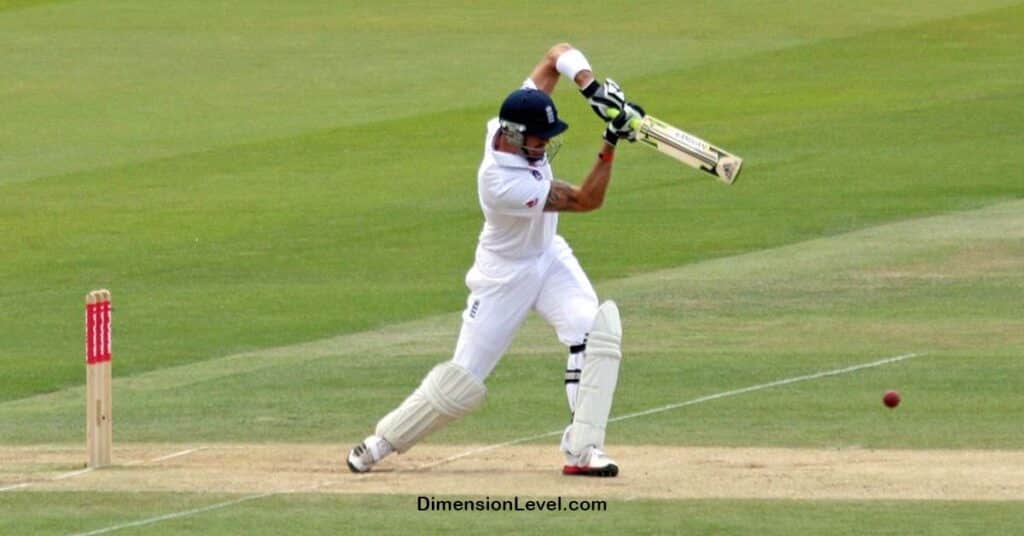
For cricket enthusiasts, here’s an interesting tidbit: a standard cricket pitch is 22 yards long, which is about 20.12 meters. So, ten meters is just shy of half a cricket pitch. Imagine a batsman standing at one end of this half-pitch – that’s your ten-meter distance!
Cricket pitch measurements:
- Full length: 20.12 meters (22 yards)
- Width: 3.05 meters (10 feet)
- Distance from popping crease to bowling crease: 1.22 meters (4 feet)
This comparison not only helps visualize ten meters but also provides insight into the precise measurements that govern sports.
Four and a Half Times the Height of André the Giant

André the Giant, the famous professional wrestler and actor, stood at an impressive 2.24 meters (7 feet 4 inches) tall. If you were to stack 4.5 André the Giants on top of each other, you’d reach our ten-meter mark!
This comparison not only gives us a unique way to visualize ten meters but also pays homage to one of the most recognizable tall figures in popular culture.
Some facts about André the Giant:
- Born: May 19, 1946, in Grenoble, France
- Height: 2.24 meters (7 feet 4 inches)
- Weight: 520 lbs (236 kg) at his heaviest
- Famous roles: Fezzik in “The Princess Bride”, various WWE appearances
¼ the Length of Ha’Penny Bridge
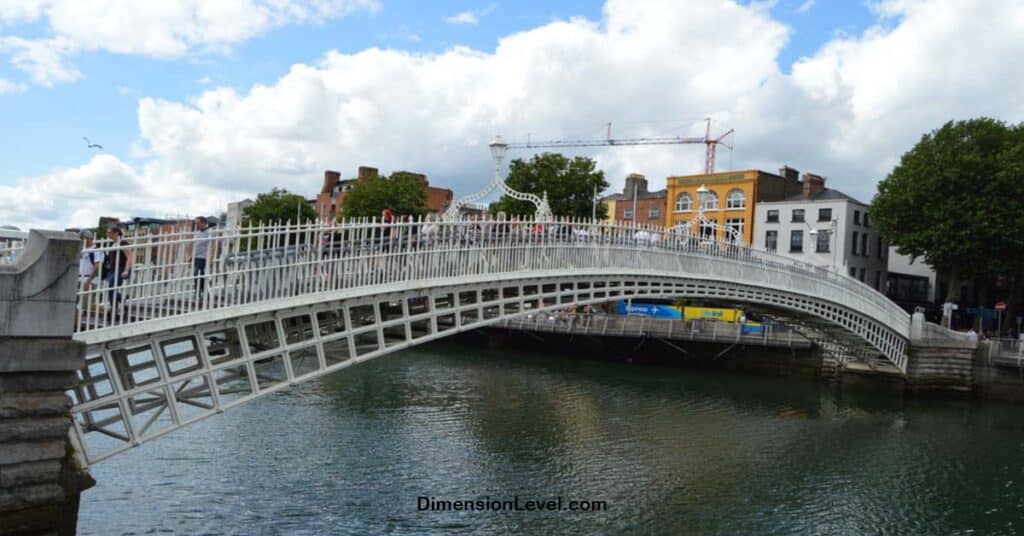
The Ha’Penny Bridge, an iconic pedestrian bridge over the River Liffey in Dublin, Ireland, is about 43 meters long. Ten meters, therefore, is roughly a quarter of the bridge’s total length.
This comparison helps us understand ten meters in the context of famous architectural structures, adding a touch of cultural significance to our measurement exploration.
Facts about Ha’Penny Bridge:
- Built in 1816
- Official name: Liffey Bridge
- Nickname comes from the halfpenny toll once charged to cross
- Made of cast iron
- Approximately 30,000 people cross it daily
A Bus: Public Transportation Perspective

Many city buses, especially the popular double-decker buses seen in cities like London, measure close to ten meters in length. The New Routemaster, a modern London double-decker, is 11.3 meters long – just slightly over our ten-meter benchmark.
| Bus Type | Length (meters) |
| Standard Single Decker | 12-15 |
| Double Decker | 10-12 |
| Articulated (“Bendy”) Bus | 18-20 |
Next time you see a bus, you’ll have a great real-world reference for ten meters!
Interesting bus facts:
- The first motor bus service began in London in 1899
- Modern buses can carry up to 120 passengers
- Electric and hybrid buses are becoming increasingly common in cities worldwide
Half a Bowling Lane: A Leisurely Comparison

A standard bowling lane is 60 feet long, which translates to about 18.29 meters. Half of this would be 9.14 meters – very close to our ten-meter mark. So, next time you’re at a bowling alley, imagine drawing a line halfway down the lane. That’s roughly ten meters!
Bowling lane dimensions:
- Length: 18.29 meters (60 feet)
- Width: 1.05 meters (41.5 inches)
- Distance from foul line to first pin: 18.29 meters (60 feet)
This comparison not only helps visualize ten meter but also gives insight into the precise measurements used in sports and leisure activities.
Five Times the Height of a Refrigerator
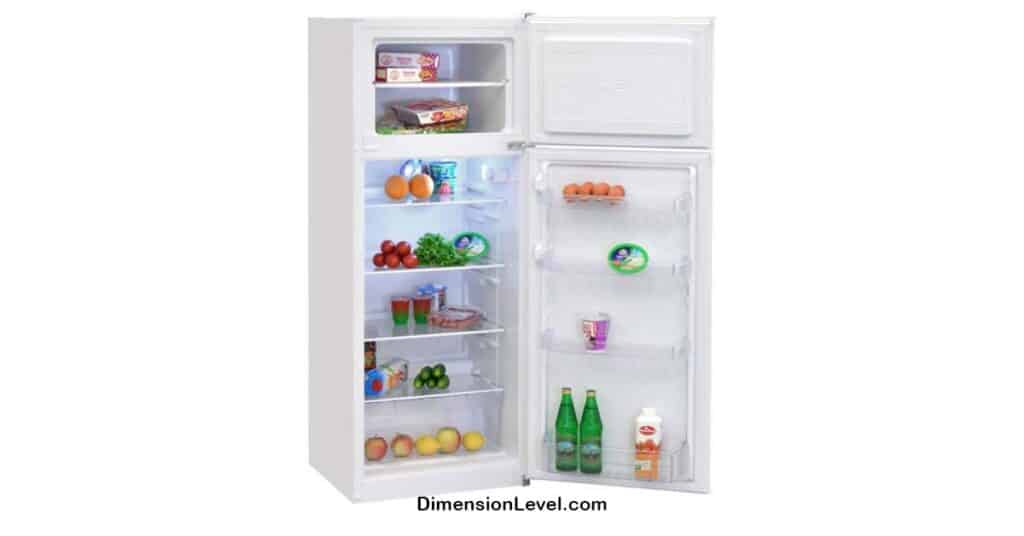
The average refrigerator stands about 1.7 to 1.8 meters tall. If you were to stack five refrigerators on top of each other, you’d reach our ten-meter height! This comparison helps us visualize the measurement using a common household appliance.
Refrigerator facts:
- The first domestic refrigerator was invented in 1913
- Modern refrigerators use about 350-780 kWh of electricity per year
- The internal temperature of a refrigerator should be between 0°C and 5°C (32°F to 41°F)
Read More About Common Things That Are 2 Millimeters
Three-story Building: Architectural Context

We mentioned this briefly earlier, but it’s worth exploring in more detail. A typical three-story building stands at about 10 meters tall. Here’s a breakdown:
- Ground floor: ~3 meters
- Second floor: ~3 meters
- Third floor: ~3 meters
- Roof and structural elements: ~1 meter
This architectural context helps us understand ten meter in terms of the built environment we see every day. It’s a height that’s tall enough to be significant but not so tall as to be imposing or dominate a skyline.
Factors that can affect building height:
- Local building codes and zoning laws
- Intended use of the building
- Structural materials used
- Ceiling height preferences
Natural Wonders at 10 Meters
While we’ve focused largely on man made structures, nature also provides some interesting ten-meter comparisons:
- Giant Sequoias: While these trees grow much taller, their diameter can reach up to 11 meters at the base.
- Saltwater Crocodiles: The largest reliably measured specimen was 6.17 meters long – about two-thirds of our ten-meter mark.
- Great White Sharks: The largest confirmed specimen was 6.1 meter long, again about two-thirds of ten meters.
These natural comparisons remind us that ten meters, while significant in human terms, is still dwarfed by some of nature’s most impressive creations.
Final Thoughts: The Versatility of 10 Meters
As we’ve explored, ten meters is a measurement that appears in various aspects of our lives, from sports and architecture to nature and everyday objects. By understanding and visualizing this length, we can better appreciate the world around us.
Whether you’re estimating distances, planning a home improvement project, or simply satisfying your curiosity, having a good grasp of what ten meters looks like can be incredibly useful.
Remember, the key to truly understanding measurements is to relate them to things you see and experience in your daily life. So, keep an eye out for ten-meter references in your surroundings. You might be surprised at how often you encounter this length once you start looking for it!
From the height of telephone poles to the length of buses, from half a cricket pitch to a quarter of the Ha’Penny Bridge, ten meter proves to be a fascinating and versatile measurement. It’s long enough to be significant, yet short enough to be easily visualized and understood.
In our journey through ten-meter comparisons, we’ve touched on architecture, sports, nature, and everyday objects. This diverse range of examples illustrates how a single measurement can bridge various aspects of our world, connecting the mundane with the extraordinary.
So, the next time someone asks you, “How long is ten meters?”, you’ll have a wealth of comparisons to draw upon. Whether you choose to describe it in terms of refrigerators, André the Giants, or bowling lanes, you’ll be able to paint a vivid picture of this length.
Understanding measurements like ten meter not only satisfies our curiosity but also helps us navigate and interact with our environment more effectively. It’s a small step towards better spatial awareness and a deeper appreciation of the measurements that shape our world.
As you go about your day, challenge yourself to spot ten-meter distances. Maybe it’s the length of your local coffee shop, the height of a nearby tree, or the distance between two lamp posts on your street. By actively engaging with this measurement, you’ll reinforce your understanding and develop a keener sense of spatial relationships.
In conclusion, ten meter is more than just a number. It’s a gateway to understanding the scale of our world, from the smallest household objects to impressive architectural feats. It’s a testament to the precision of sports and the raw power of nature. Most importantly, it’s a reminder that even seemingly abstract measurements have tangible, real-world significance.
Keep measuring, keep observing, and keep learning. After all, understanding the world around us, even in terms as simple as ten-meter lengths, is a never-ending and always rewarding journey!
Read also Common Things That Are 1 Meter Long

Deborah Melindah is an experienced blogger passionate about exploring the world of dimensions. With a keen eye for detail and a talent for simplifying complex topics, she shares her knowledge on spatial concepts, measurements, and more. Deborah’s insightful posts make it easy for readers to grasp and apply dimensions in everyday life, whether for personal projects or professional pursuits.







